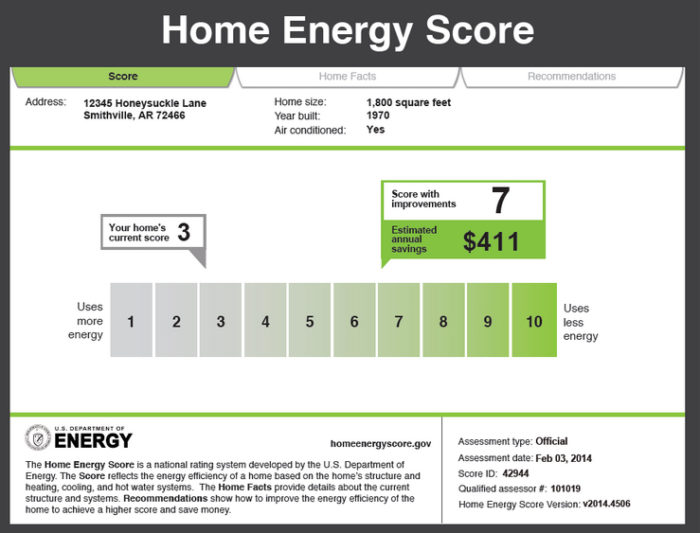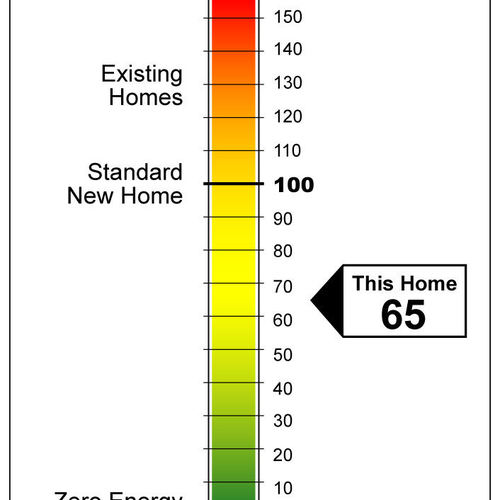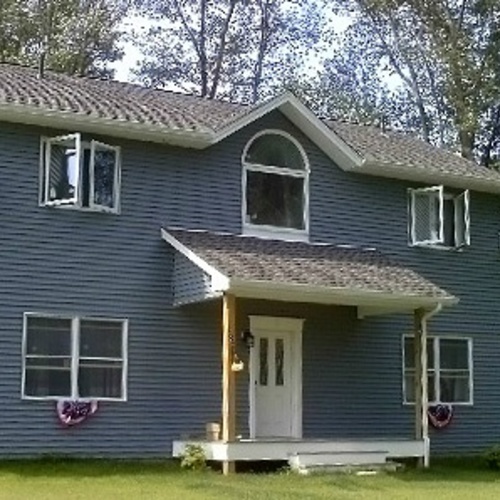
Connecticut residents are being introduced to a new tool for gauging the energy efficiency of houses they own or may want to buy.
The U.S. Department of Energy (DOE) said that Connecticut becomes the first state in the country to adopt the Home Energy Score program statewide.
Houses are rated on a scale of 1 to 10 for energy efficiency in a labeling program that’s designed to give buyers more information about houses before they buy. Homeowners benefit as well. The free inspections give them suggestions for making their homes more efficient.
DOE said that the program, called EnergizeCT Home Energy Solutions, provides a label similar to a miles-per-gallon rating for new cars that could be included in real estate listings so buyers will get a good idea of the true cost of owning the property.
Connecticut hopes to score between 12,000 and 14,000 homes per year, part of a statewide effort to weatherize 80 percent of all homes in the state by 2030. DOE said Colorado and Vermont also have signed on, with Alabama, Arkansas, and New Hampshire expected to do so in the near future.
Money to run the program in Connecticut comes from Energize Connecticut, an agency that pays for energy efficiency efforts for commercial and residential customers, underwritten with a surcharge on energy bills.
Data gathered on a brief home walk-through
Assessors take a walk-through of about an hour to collect data about the house, and then turn to the Home Energy Scoring Tool developed by the Lawrence Berkeley National Laboratory in order to produce the numerical score and suggestions for improvements.
DOE says that the scoring tool takes into account “fixed attributes” of a house — walls, windows, heating and cooling equipment — and makes assumptions about occupant behavior. Appliances, lighting, and home electronics aren’t included. Recommendations and energy savings are based on national averages for specific improvements as well as average state utility rates.
Assessors collect some 40 pieces of information, but the inspection isn’t as thorough as a full-blown energy audit that would include the use of diagnostics such as a blower-door test and a better accounting of occupant behavior. But the department said that homeowners might be encouraged to follow up with a whole-house assessment later.
DOE cautions that there’s often more to it than a simple number. A home in New England with a high score (meaning high energy efficiency) may use more energy than one in southern California simply because of differences in climate. Occupants who keep summer thermostat temperatures low and never bother to turn off lights or electronics may use a lot of energy despite a high score.
Energy scores can be compared for houses in different parts of the country, but not to compare projected energy bills. The software takes into account the typical range of energy consumption in the region where you live, according to DOE.
Weekly Newsletter
Get building science and energy efficiency advice, plus special offers, in your inbox.















3 Comments
So Close, but they still missed it
"DOE cautions that there's often more to it than a simple number. A home in New England with a high score (meaning high energy efficiency) may use more energy than one in southern California simply because of differences in climate."
That's why this is a crappy rating system. I want to know how many dollars this home will cost per year in a standard climate. That's the only way I can compare it to another home.
A rating system in dollars per year is the only one that makes sense, just like EPA's appliance rating.
House Energy Efficiency (Energy Label Program, CT)
I'm glad to see efforts like the Label Program. We/they will learn from it. The modeling will improve with time.
In reading Scott's summary I'm a bit disappointed that utility bill data is not mentioned explicitly. Sure, there are a lot of unknowns in the data but there are ways of deriving value from the utility bills. To filter out the use of appliances and behavioral aspects I like to look at the bills in the mild weather months (in whatever climate) and deduct this from the summer and winter numbers to get an estimate of what the house is capable of doing when heat or cooling is required. I think I'd rather see the utility bills more than someone's scoring. But the scoring is worth looking at even so.
I'm hoping that energy performance becomes more relevant in home sales (based on buyer interest, not coercion). Despite the on-going interest in energy efficiency and green energy, I can hear a real estate broker advising something like: "Forget all that. It's location. It's curb appeal. It's the condition of the house. It's how the buyer envisions living in your house. No one buys a house based on energy use. That's all in your mind. That's you." (Sound familiar? I didn't make it up. I've actually heard it just about that way.)
My understanding of this is
My understanding of this is that it's an asset rating (vs how the homeowners use that asset) and this data collection will be rolled out during the state's existing assessment + light weatherization measures program (Home Energy Solutions.) It will be interesting to have this much data at scale. The underlying energy assessment does use a blower door but I don't think that is required (or even factored in?) to the score.
The first beta of this I was part of raised questions about whether it would be usable to motivate homeowners to do additional conservation work. Large homes scored poorly. In an old home where the homeowner did quite a bit of work it went from something like a 2 to a 4. That's not super motivational without being wrapped in a lot of context. That said the scoring system may have evolved since that time 2 years ago and become more sensitive and rewarding of improvements.
Log in or create an account to post a comment.
Sign up Log in